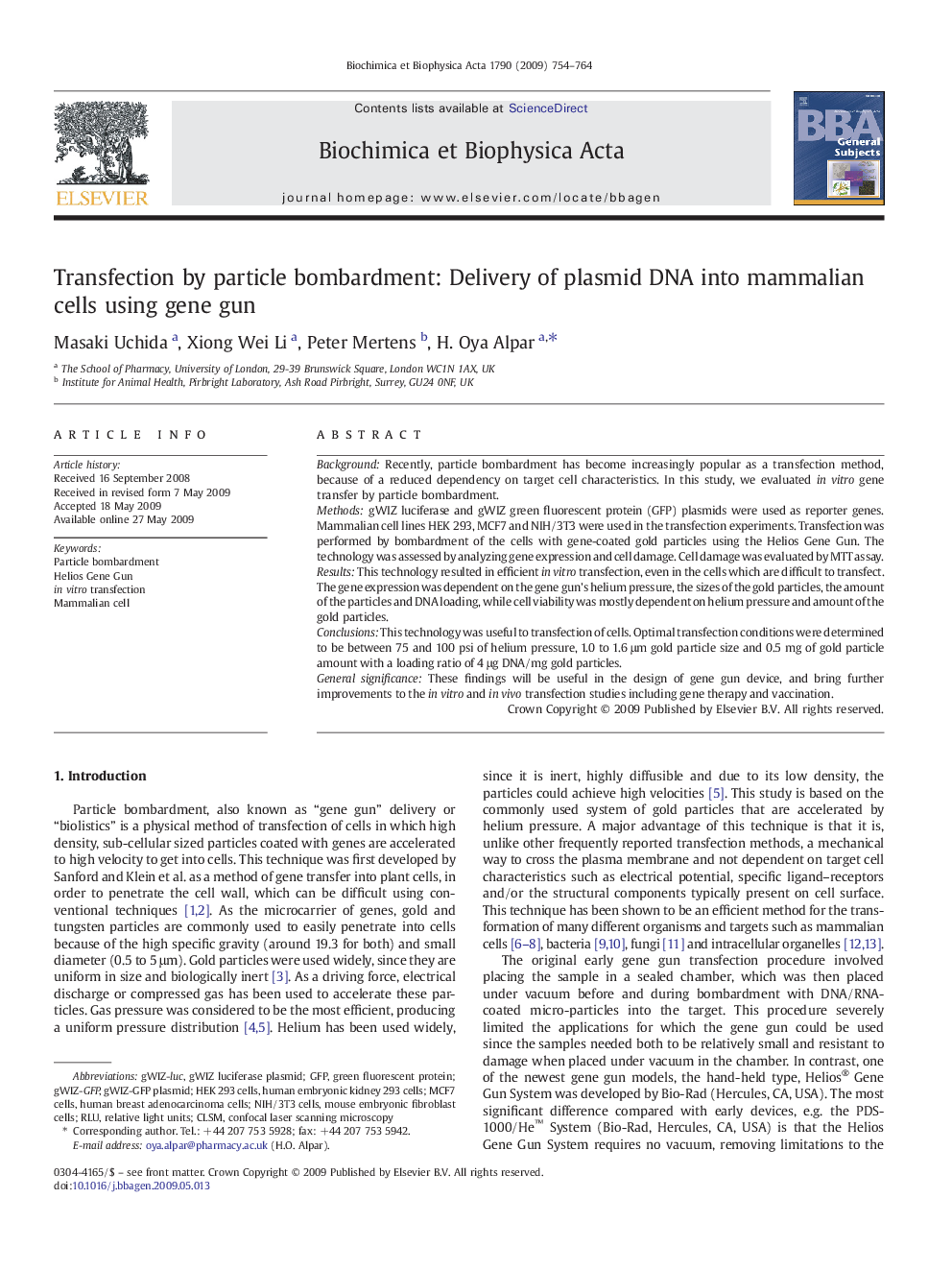| Article ID | Journal | Published Year | Pages | File Type |
|---|---|---|---|---|
| 1948237 | Biochimica et Biophysica Acta (BBA) - General Subjects | 2009 | 11 Pages |
BackgroundRecently, particle bombardment has become increasingly popular as a transfection method, because of a reduced dependency on target cell characteristics. In this study, we evaluated in vitro gene transfer by particle bombardment.MethodsgWIZ luciferase and gWIZ green fluorescent protein (GFP) plasmids were used as reporter genes. Mammalian cell lines HEK 293, MCF7 and NIH/3T3 were used in the transfection experiments. Transfection was performed by bombardment of the cells with gene-coated gold particles using the Helios Gene Gun. The technology was assessed by analyzing gene expression and cell damage. Cell damage was evaluated by MTT assay.ResultsThis technology resulted in efficient in vitro transfection, even in the cells which are difficult to transfect. The gene expression was dependent on the gene gun's helium pressure, the sizes of the gold particles, the amount of the particles and DNA loading, while cell viability was mostly dependent on helium pressure and amount of the gold particles.ConclusionsThis technology was useful to transfection of cells. Optimal transfection conditions were determined to be between 75 and 100 psi of helium pressure, 1.0 to 1.6 μm gold particle size and 0.5 mg of gold particle amount with a loading ratio of 4 μg DNA/mg gold particles.General significanceThese findings will be useful in the design of gene gun device, and bring further improvements to the in vitro and in vivo transfection studies including gene therapy and vaccination.
